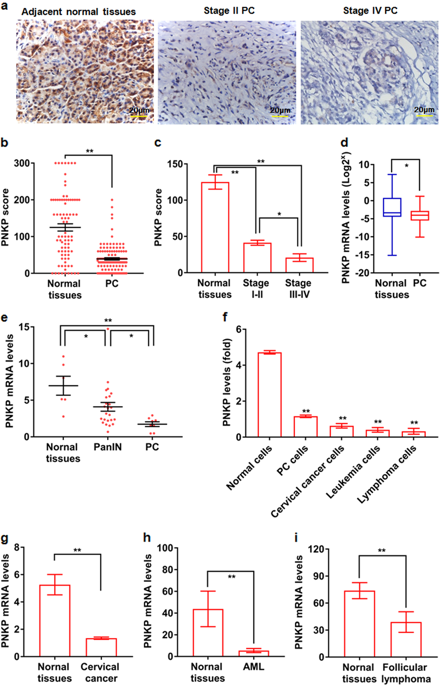当前位置:
X-MOL 学术
›
Cell Death Differ.
›
论文详情
Our official English website, www.x-mol.net, welcomes your
feedback! (Note: you will need to create a separate account there.)
The lipogenic LXR-SREBF1 signaling pathway controls cancer cell DNA repair and apoptosis and is a vulnerable point of malignant tumors for cancer therapy.
Cell Death and Differentiation ( IF 13.7 ) Pub Date : 2020-03-06 , DOI: 10.1038/s41418-020-0514-3 Bo Yang 1, 2 , Bin Zhang 3, 4, 5, 6, 7, 8 , Zhifei Cao 3, 4, 5, 6, 9 , Xingdong Xu 10, 11 , Zihe Huo 3, 4, 5, 6 , Pan Zhang 3, 4, 5, 6 , Shufen Xiang 3, 4, 5, 6 , Zhe Zhao 3, 4, 5, 6 , Chunping Lv 3, 4, 5, 6 , Mei Meng 3, 4, 5, 6 , Gaochuan Zhang 12 , Liang Dong 13 , Shucheng Shi 1, 2 , Lan Yang 1, 2 , Quansheng Zhou 3, 4, 5, 6
Cell Death and Differentiation ( IF 13.7 ) Pub Date : 2020-03-06 , DOI: 10.1038/s41418-020-0514-3 Bo Yang 1, 2 , Bin Zhang 3, 4, 5, 6, 7, 8 , Zhifei Cao 3, 4, 5, 6, 9 , Xingdong Xu 10, 11 , Zihe Huo 3, 4, 5, 6 , Pan Zhang 3, 4, 5, 6 , Shufen Xiang 3, 4, 5, 6 , Zhe Zhao 3, 4, 5, 6 , Chunping Lv 3, 4, 5, 6 , Mei Meng 3, 4, 5, 6 , Gaochuan Zhang 12 , Liang Dong 13 , Shucheng Shi 1, 2 , Lan Yang 1, 2 , Quansheng Zhou 3, 4, 5, 6
Affiliation

|
Cancer cells are defective in DNA repair, so they experience increased DNA strand breaks, genome instability, gene mutagenesis, and tumorigenicity; however, multiple classic DNA repair genes and pathways are strongly activated in malignant tumor cells to compensate for the DNA repair deficiency and gain an apoptosis resistance. The mechanisms underlying this phenomenon in cancer are unclear. We speculate that a key DNA repair gene or signaling pathway in cancer has not yet been recognized. Here, we show that the lipogenic liver X receptor (LXR)-sterol response element binding factor-1 (SREBF1) axis controls the transcription of a key DNA repair gene polynucleotide kinase/phosphatase (PNKP), thereby governing cancer cell DNA repair and apoptosis. Notably, the PNKP levels were significantly reduced in 95% of human pancreatic cancer (PC) patients, particularly deep reduction for sixfold in all of the advanced-stage PC cases. PNKP is also deficient in three other types of cancer that we examined. In addition, the expression of LXRs and SREBF1 was significantly reduced in the tumor tissues from human PC patients compared with the adjacent normal tissues. The newly identified LXR-SREBF1-PNKP signaling pathway is deficient in PC, and the defect in the pathway contributes to the DNA repair deficiency in the cancer. Strikingly, further diminution of the vulnerable LXR-SREBF1-PNKP signaling pathway using a small molecule triptonide, a new LXR antagonist identified in this investigation, at a concentration of 8 nM robustly activated tumor-suppressor p53 and readily elevated cancer cell DNA strand breaks over an apoptotic threshold, and selectively induced PC cell apoptosis, resulting in almost complete elimination of tumors in xenograft mice without obvious complications. Our findings provide new insight into DNA repair and apoptosis in cancer, and offer a new platform for developing novel anticancer therapeutics.
中文翻译:

脂肪生成LXR-SREBF1信号通路控制癌细胞DNA修复和凋亡,是恶性肿瘤治疗的薄弱环节。
癌细胞在DNA修复方面存在缺陷,因此它们会经历更多的DNA链断裂、基因组不稳定、基因突变和致瘤性;然而,多种经典的DNA修复基因和途径在恶性肿瘤细胞中被强烈激活,以补偿DNA修复缺陷并获得凋亡抵抗。癌症中这种现象的机制尚不清楚。我们推测癌症中关键的 DNA 修复基因或信号通路尚未得到认识。在这里,我们发现脂肪生成肝X受体(LXR)-甾醇反应元件结合因子-1(SREBF1)轴控制关键DNA修复基因多核苷酸激酶/磷酸酶(PNKP)的转录,从而控制癌细胞DNA修复和凋亡。值得注意的是,95% 的人类胰腺癌 (PC) 患者的 PNKP 水平显着降低,特别是在所有晚期 PC 病例中深度降低了六倍。 PNKP 在我们检查的其他三种癌症中也存在缺陷。此外,与癌旁正常组织相比,人类PC患者肿瘤组织中LXRs和SREBF1的表达显着降低。新发现的 LXR-SREBF1-PNKP 信号通路在 PC 中存在缺陷,该通路的缺陷导致癌症中 DNA 修复缺陷。引人注目的是,使用小分子雷公藤内酯(本研究中发现的一种新的 LXR 拮抗剂)进一步减少了脆弱的 LXR-SREBF1-PNKP 信号通路,浓度为 8 nM,强力激活肿瘤抑制因子 p53,并容易升高癌细胞 DNA 链断裂细胞凋亡阈值,并选择性诱导 PC 细胞凋亡,导致异种移植小鼠中的肿瘤几乎完全消除,且没有明显的并发症。 我们的研究结果为癌症中的 DNA 修复和细胞凋亡提供了新的见解,并为开发新型抗癌疗法提供了新平台。
更新日期:2020-04-24
中文翻译:

脂肪生成LXR-SREBF1信号通路控制癌细胞DNA修复和凋亡,是恶性肿瘤治疗的薄弱环节。
癌细胞在DNA修复方面存在缺陷,因此它们会经历更多的DNA链断裂、基因组不稳定、基因突变和致瘤性;然而,多种经典的DNA修复基因和途径在恶性肿瘤细胞中被强烈激活,以补偿DNA修复缺陷并获得凋亡抵抗。癌症中这种现象的机制尚不清楚。我们推测癌症中关键的 DNA 修复基因或信号通路尚未得到认识。在这里,我们发现脂肪生成肝X受体(LXR)-甾醇反应元件结合因子-1(SREBF1)轴控制关键DNA修复基因多核苷酸激酶/磷酸酶(PNKP)的转录,从而控制癌细胞DNA修复和凋亡。值得注意的是,95% 的人类胰腺癌 (PC) 患者的 PNKP 水平显着降低,特别是在所有晚期 PC 病例中深度降低了六倍。 PNKP 在我们检查的其他三种癌症中也存在缺陷。此外,与癌旁正常组织相比,人类PC患者肿瘤组织中LXRs和SREBF1的表达显着降低。新发现的 LXR-SREBF1-PNKP 信号通路在 PC 中存在缺陷,该通路的缺陷导致癌症中 DNA 修复缺陷。引人注目的是,使用小分子雷公藤内酯(本研究中发现的一种新的 LXR 拮抗剂)进一步减少了脆弱的 LXR-SREBF1-PNKP 信号通路,浓度为 8 nM,强力激活肿瘤抑制因子 p53,并容易升高癌细胞 DNA 链断裂细胞凋亡阈值,并选择性诱导 PC 细胞凋亡,导致异种移植小鼠中的肿瘤几乎完全消除,且没有明显的并发症。 我们的研究结果为癌症中的 DNA 修复和细胞凋亡提供了新的见解,并为开发新型抗癌疗法提供了新平台。











































 京公网安备 11010802027423号
京公网安备 11010802027423号